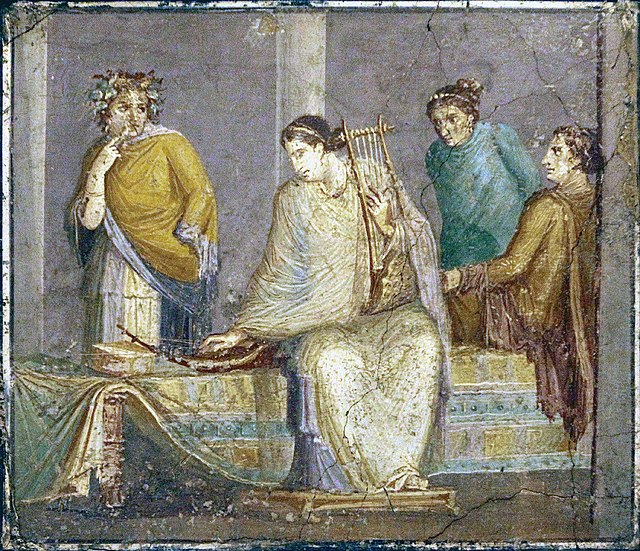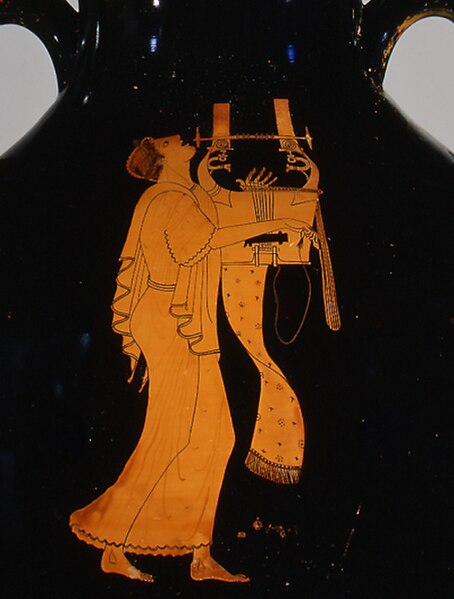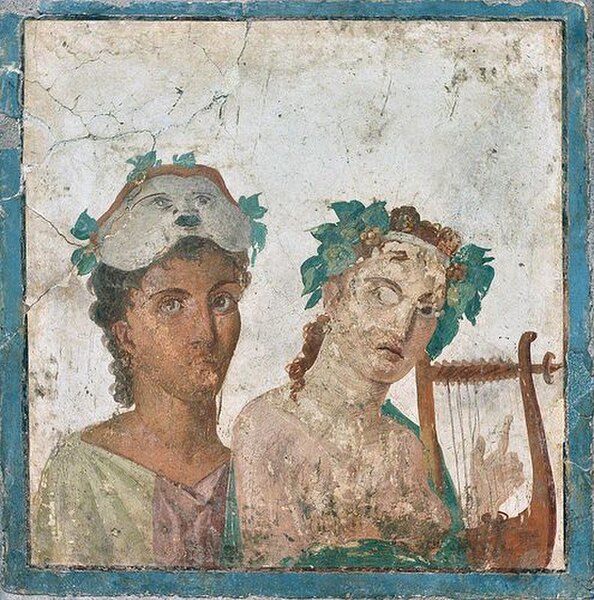The kithara, or Latinized cithara, was an ancient Greek musical instrument in the yoke lutes family. It was a seven-stringed professional version of the lyre, which was regarded as a rustic, or folk instrument, appropriate for teaching music to beginners. As opposed to the simpler lyre, the cithara was primarily used by professional musicians, called kitharodes. In modern Greek, the word kithara has come to mean "guitar", a word which etymologically stems from kithara.
Woman with cithara (right) and sambuca (left). Roman fresco from Pompeii, 1st century CE (National Archaeological Museum, Naples).
Apollo kitharoidos (Apollo holding a cithara and wearing the customary kitharōdos’ robes) and musagetes (leading the Muses). Marble, Roman artwork, 2nd century CE.
Greek vase drawing depicting a man playing a cithara with eight strings. Note the plectrum in his lowered right hand.
Kithara player by the Berlin Painter c. 490 BCE
The lyre is a stringed musical instrument that is classified by Hornbostel–Sachs as a member of the lute family of instruments. In organology, a lyre is considered a yoke lute, since it is a lute in which the strings are attached to a yoke that lies in the same plane as the sound table, and consists of two arms and a crossbar.
Greek vase with muse playing the phorminx, a type of lyre
A Roman fresco from Pompeii, 1st century AD, depicting a man in a theatre mask and a woman wearing a garland while playing a lyre
The Mycenaean sarcophagus of Hagia Triada, 14th century BC, depicting the earliest lyre with seven strings, held by a man with long robe, third from the left.
A lyre from Ancient Egypt, found in Thebes








